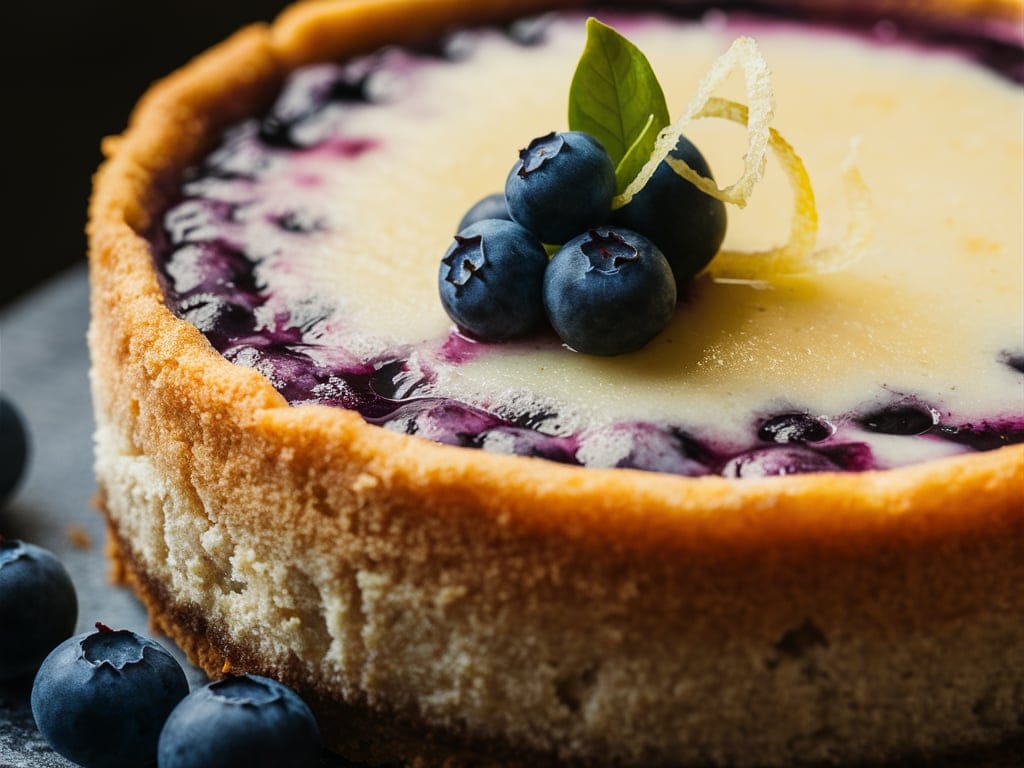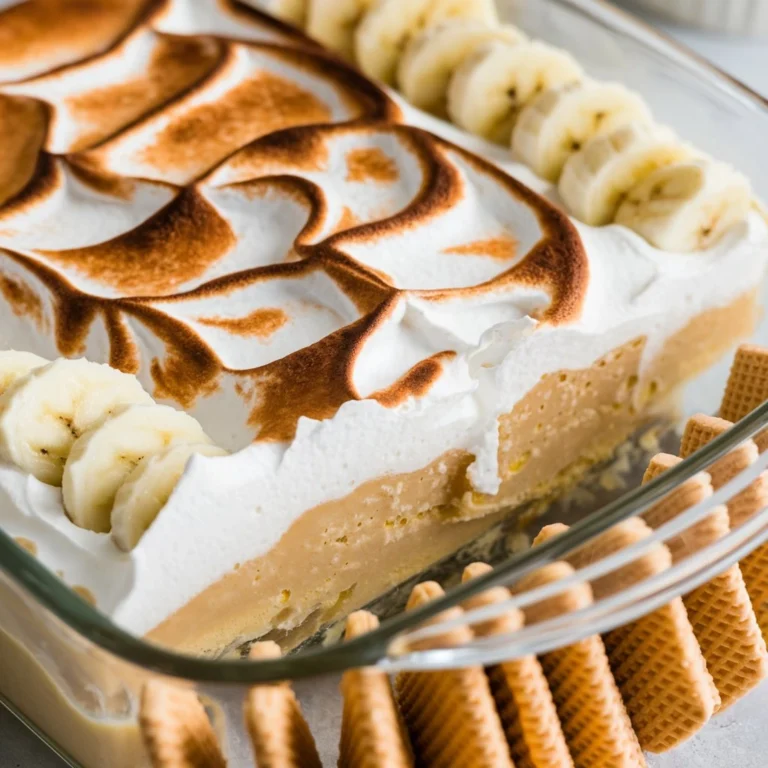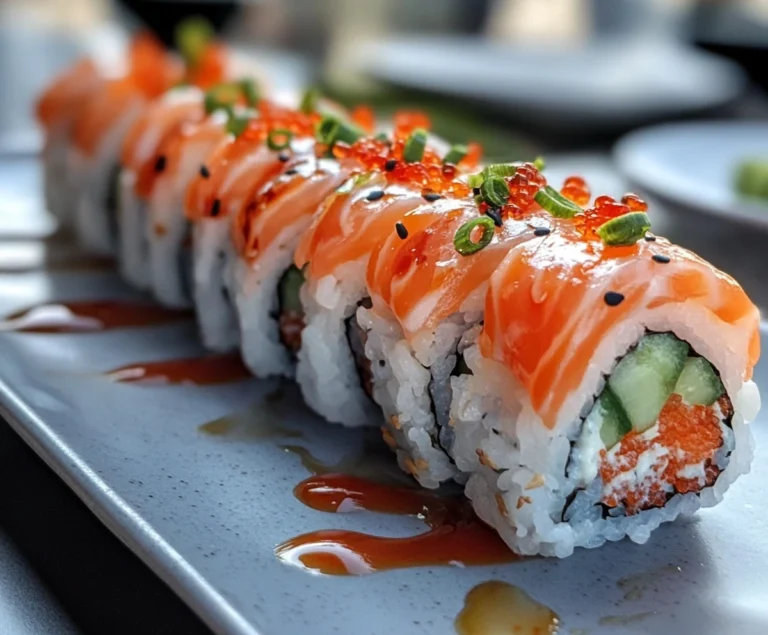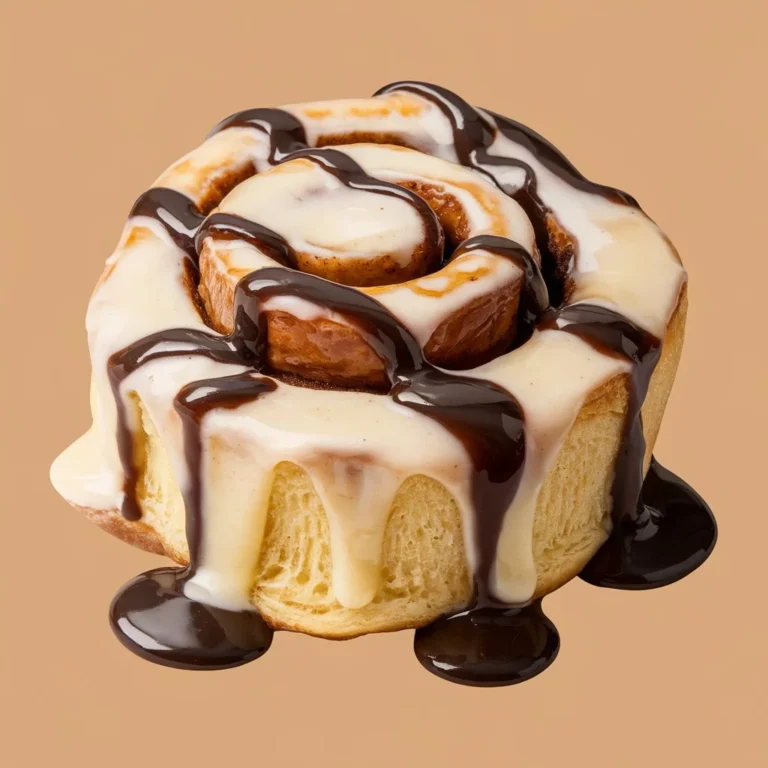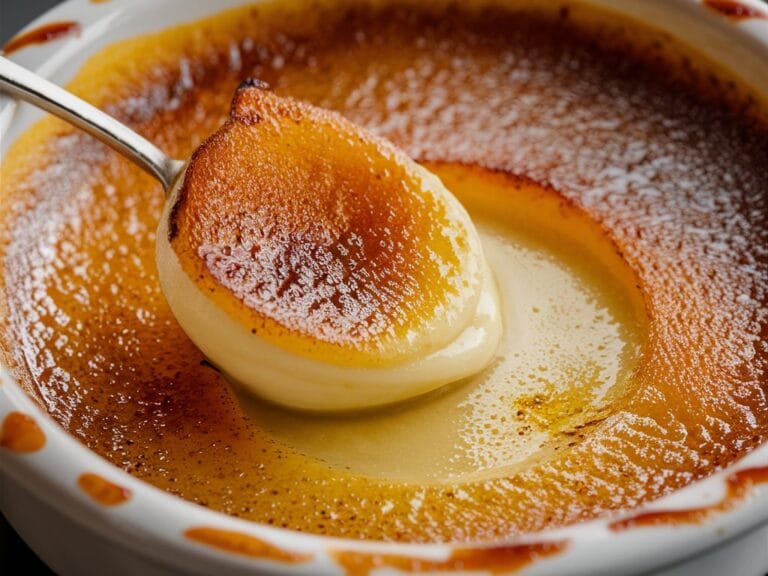Lemon Blueberry Cheesecake Recipe: Creamy & Tangy Delight
Cheesecake is one of the most cherished desserts around the world, known for its rich, creamy texture and the versatility it offers in flavor combinations. Among the myriad of cheesecake variations, lemon blueberry cheesecake stands out for its perfect balance of tart and sweet flavors. The zestiness of lemon paired with the natural sweetness of blueberries creates a refreshing dessert that is as visually appealing as it is delicious.
In this guide, we’ll walk you through everything you need to know to make a flawless lemon blueberry cheesecake. Whether you’re a novice baker or have years of experience, this comprehensive tutorial will provide you with tips, tricks, and variations to master this delightful dessert. From understanding the role of each ingredient to troubleshooting common issues, this article has it all.
Why Lemon and Blueberry?
Before diving into the recipe, it’s worth exploring why the combination of lemon and blueberry is so universally loved. Lemon brings a bright, citrusy acidity that cuts through the richness of the cream cheese, while blueberries add a sweet, fruity contrast. The pairing is a match made in heaven, offering a well-rounded flavor profile that appeals to a wide range of palates.
Moreover, both lemon and blueberries are packed with health benefits. Lemons are rich in vitamin C and antioxidants, while blueberries are known for their high levels of vitamins K and C, fiber, and antioxidants. This makes lemon blueberry cheesecake not just a treat for the taste buds but also a dessert that provides a nutritional boost.
Ingredients to Lemon Blueberry Cheesecake
Key Ingredients
To create a lemon blueberry cheesecake that is creamy, flavorful, and perfectly balanced, it’s essential to use high-quality ingredients. Here’s what you’ll need:
- Cream Cheese: The base of any cheesecake, cream cheese provides the rich, smooth texture that we all love. It’s important to use full-fat cream cheese for the best results.
- Lemon Zest and Juice: Lemon adds the tangy brightness that balances the sweetness of the cheesecake. Use freshly squeezed lemon juice and zest for the most vibrant flavor.
- Fresh Blueberries: These little berries burst with sweetness and color, adding both flavor and visual appeal. If fresh blueberries aren’t in season, you can use frozen blueberries, but make sure to thaw and drain them first to avoid excess moisture.
- Graham Cracker Crust: A classic base that provides a crunchy contrast to the creamy filling. For those looking to experiment, alternatives like digestive biscuits or Oreo cookies can offer a unique twist.
- Eggs: Eggs provide structure and richness to the cheesecake. Make sure they are at room temperature to ensure a smooth mixture.
- Sugar: Adds sweetness to the cheesecake and helps balance the tartness of the lemon.
Optional Ingredients
- Vanilla Extract: While not essential, a teaspoon of vanilla extract can add a subtle depth of flavor that complements the lemon and blueberries.
- Cornstarch or Flour: Some recipes call for a small amount of cornstarch or flour to help stabilize the cheesecake and prevent cracking. This is optional but can be helpful, especially for beginners.
- Sour Cream or Greek Yogurt: Adding a bit of sour cream or Greek yogurt can enhance the creaminess and tanginess of the cheesecake.
Ingredient Substitutions
If you’re out of certain ingredients or have dietary restrictions, here are some substitutions that work well:
- Cream Cheese: For a lighter version, use Neufchâtel cheese. For a vegan option, try using dairy-free cream cheese.
- Graham Cracker Crust: Use gluten-free graham crackers or another gluten-free cookie if you need a gluten-free crust.
- Sugar: For a lower sugar option, consider using a sugar substitute like Stevia or erythritol, though this may slightly alter the texture.
Equipment Needed of Lemon Blueberry Cheesecake
Making a lemon blueberry cheesecake doesn’t require fancy equipment, but having the right tools can make the process easier and ensure better results:
- Springform Pan: Essential for cheesecake, a springform pan allows for easy removal of the cheesecake once it’s set. A 9-inch pan is standard, but you can adjust the size based on your needs.
- Electric Mixer: While you can mix by hand, an electric mixer will help you achieve a smoother, lump-free filling.
- Mixing Bowls: You’ll need a few bowls for mixing the crust, filling, and topping.
- Measuring Cups and Spoons: Accurate measurements are key in baking, so make sure you have a good set of measuring tools.
- Spatula: A rubber spatula is useful for scraping down the sides of the bowl and ensuring all ingredients are well incorporated.
- Oven and Cooling Rack: A well-calibrated oven is crucial for even baking, and a cooling rack will help your cheesecake cool down gradually.
Step-by-Step Instructions to Lemon Blueberry Cheesecake
Preparing the Graham Cracker Crust
The crust is the foundation of your cheesecake, and a good crust sets the stage for the entire dessert. Here’s how to prepare the perfect graham cracker crust:
- Ingredients:
- 1 ½ cups graham cracker crumbs
- ⅓ cup sugar
- 6 tablespoons melted butter
- Instructions:
- Preheat the Oven: Start by preheating your oven to 325°F (163°C).
- Mix Ingredients: In a medium-sized mixing bowl, combine the graham cracker crumbs, sugar, and melted butter. Stir until the crumbs are evenly coated and the mixture resembles wet sand.
- Press into Pan: Press the crumb mixture firmly into the bottom of a 9-inch springform pan, using the bottom of a glass or measuring cup to pack it down evenly.
- Bake: Bake the crust in the preheated oven for 10 minutes, then remove and let it cool while you prepare the filling.
For those who enjoy experimenting with different textures and flavors, you might consider trying this pumpkin banana loaf as an alternative crust option. The natural sweetness of the bananas combined with the earthiness of pumpkin creates a unique base that pairs surprisingly well with the lemon and blueberry filling.
Making the Lemon Blueberry Cheesecake Filling
The filling is where the magic happens, transforming simple ingredients into a creamy, luscious cheesecake. Follow these steps for a foolproof filling:
- Ingredients:
- 24 oz cream cheese (softened)
- 1 cup sugar
- 3 large eggs (room temperature)
- 1 teaspoon vanilla extract (optional)
- Zest and juice of 2 lemons
- 1 ½ cups fresh blueberries
- Instructions:
- Beat the Cream Cheese and Sugar: In a large mixing bowl, beat the softened cream cheese and sugar together using an electric mixer on medium speed. Beat until the mixture is smooth and creamy, with no lumps remaining.
- Add Eggs One at a Time: Add the eggs one at a time, beating well after each addition. This ensures the eggs are fully incorporated and helps prevent the mixture from becoming too airy.
- Incorporate Lemon Zest and Juice: Stir in the lemon zest and juice. If you’re using vanilla extract, add it at this stage as well.
- Fold in Blueberries: Gently fold in the fresh blueberries using a spatula, being careful not to crush them. This will ensure they remain whole and evenly distributed throughout the cheesecake.
Baking the Cheesecake
Baking a cheesecake requires precision, but with a few tips, you can avoid common pitfalls like cracking or overbaking:
- Instructions:
- Prepare a Water Bath: Wrap the bottom of your springform pan in aluminum foil to prevent any water from seeping in. Place the pan in a larger baking dish and fill the dish with hot water until it reaches halfway up the sides of the springform pan. This water bath helps the cheesecake bake evenly and prevents it from cracking.
- Bake: Pour the cheesecake filling into the prepared crust. Place the entire setup in your preheated oven and bake at 325°F (163°C) for 55-65 minutes. The cheesecake is done when the edges are set, but the center is still slightly jiggly.
- Cool Gradually: Turn off the oven and crack the door open slightly, allowing the cheesecake to cool slowly for an hour. This gradual cooling process helps prevent cracks.
If you’re interested in learning more about how to prevent common cheesecake issues, such as cracking, you can check out this helpful guide on cheesecake cracking prevention.
Cooling and Setting the Cheesecake
Cooling your cheesecake properly is just as important as baking it. Here’s how to do it:
- Instructions:
- Room Temperature Cool: After the initial hour of cooling in the oven, remove the cheesecake from the water bath and place it on a cooling rack. Allow it to cool completely at room temperature.
- Refrigerate: Once the cheesecake has reached room temperature, transfer it to the refrigerator and let it chill for at least 4 hours, or overnight if possible. This chilling time allows the flavors to meld and the texture to set.
Cooling the cheesecake gradually and thoroughly is key to achieving a smooth, crack-free surface. If you’ve ever wondered how to ensure your cheesecake sets perfectly, this earl grey cookies recipe provides some additional cooling tips that can be applied here.
Preparing the Lemon Blueberry Topping
A fresh and vibrant topping is the perfect finishing touch for your cheesecake. This simple lemon blueberry topping adds an extra burst of flavor and makes the dessert even more visually appealing:
- Ingredients:
- 1 cup fresh blueberries
- 1 tablespoon lemon zest
- ¼ cup sugar
- 2 tablespoons water
- Instructions:
- Cook the Blueberries: In a small saucepan, combine the blueberries, lemon zest, sugar, and water. Cook over medium heat, stirring occasionally, until the blueberries begin to release their juices and the mixture thickens slightly, about 5-7 minutes.
- Cool the Topping: Remove the saucepan from the heat and let the topping cool to room temperature before spreading it over the chilled cheesecake.
This topping not only enhances the flavor but also adds a beautiful glossy finish to the cheesecake, making it the star of any dessert table.
Assembling and Serving
Here’s how to assemble and serve your lemon blueberry cheesecake to make it look as good as it tastes:
- Instructions:
- Remove from Pan: Once the cheesecake is fully set, carefully run a knife around the edge of the cheesecake to loosen it from the sides of the pan. Unlock and remove the springform pan’s outer ring.
- Apply the Topping: Spread the cooled lemon blueberry topping evenly over the top of the cheesecake.
- Slice and Serve: Use a sharp knife to slice the cheesecake into even portions. For clean slices, wipe the knife with a warm, damp cloth between each cut.
Serve your cheesecake with fresh berries or a lemon slice garnish for an elegant presentation. This lemon blueberry cheesecake pairs wonderfully with a cup of tea, and if you’re in the mood for more baking, you might enjoy trying this coffee cupcake recipe as a complement to your cheesecake.
Tips for the Perfect Lemon Blueberry Cheesecake
Creating the perfect cheesecake is an art that comes with practice, but these tips will help you get it right on the first try:
- Avoid Overmixing: Overmixing the batter can incorporate too much air, which leads to cracks during baking. Mix just until the ingredients are combined.
- Room Temperature Ingredients: Ensure all ingredients are at room temperature before mixing. This helps them combine more easily and results in a smoother filling.
- Water Bath: Using a water bath helps regulate the temperature and prevents the cheesecake from cracking.
- Cool Gradually: Allow the cheesecake to cool gradually in the oven and then at room temperature before refrigerating. This helps prevent cracks and ensures a smooth, creamy texture.
- Use a Sharp Knife: When slicing the cheesecake, use a sharp knife dipped in hot water and wiped dry for clean, smooth slices.
Recipe Variations
While the classic lemon blueberry cheesecake is a crowd-pleaser, there are plenty of ways to put your own spin on this dessert:
- No-Bake Version: If you’re short on time or want a lighter option, try a no-bake version of this cheesecake. Simply prepare the crust and filling as usual, but instead of baking, refrigerate the cheesecake until it’s set. This version is perfect for hot summer days when you don’t want to turn on the oven.
- Vegan and Gluten-Free: For a vegan cheesecake, use dairy-free cream cheese and a flaxseed or chia seed mixture as an egg substitute. Pair this with a gluten-free crust made from almond flour or gluten-free cookies for a dessert that everyone can enjoy.
- Flavor Combinations: While lemon and blueberry are a classic pairing, you can experiment with other flavors. Try a raspberry lime combination for a tart twist, or swap the blueberries for strawberries and add a touch of basil for a fresh, summery flavor.
If you’re looking to explore other unique flavor profiles, you might enjoy this almond flour cupcake recipe, which offers a nutty, rich alternative to traditional flour-based desserts.
Troubleshooting Common Issues
Even the most experienced bakers encounter problems from time to time. Here’s how to troubleshoot some common cheesecake issues:
- Cracked Cheesecake: If your cheesecake cracks, don’t despair! Often, cracks are caused by overbaking or rapid temperature changes. To avoid this, use a water bath, don’t overmix the batter, and cool the cheesecake gradually. If cracks do appear, you can always cover them with topping or whipped cream.
- Overcooked or Undercooked: It can be tricky to know when a cheesecake is done. The edges should be set, but the center should still be slightly jiggly. If your cheesecake is overcooked, it may become dry and crumbly. If undercooked, it will be too soft and may not hold its shape. To check doneness, gently tap the side of the pan; the center should wobble slightly.
- Texture Issues: If your cheesecake is too dense, it may be due to overmixing or using cold ingredients. On the other hand, if it’s too runny, it could be underbaked or not enough thickening agents (like eggs or cornstarch) were used.
If you enjoy baking but find troubleshooting frustrating, this mini cupcake recipe guide offers more tips that can be applied to various desserts, including cheesecakes.
Frequently Asked Questions
Here are answers to some of the most common questions about lemon blueberry cheesecake:
- Can I use frozen blueberries instead of fresh? Yes, you can use frozen blueberries. Just make sure to thaw and drain them before adding them to the batter to prevent excess moisture, which could affect the cheesecake’s texture.
- How long does lemon blueberry cheesecake last? This cheesecake can be stored in the refrigerator for up to 5 days. To keep it fresh, cover it tightly with plastic wrap or store it in an airtight container.
- What’s the best way to store leftover cheesecake? Wrap leftover cheesecake slices in plastic wrap and store them in an airtight container in the fridge. For longer storage, you can freeze cheesecake for up to 2 months. To freeze, wrap the slices in plastic wrap, then in aluminum foil, and place them in a freezer-safe container.
- Can I make this cheesecake ahead of time? Yes, cheesecake actually benefits from being made a day or two ahead of time, as it allows the flavors to meld and the texture to set properly. Simply store it in the refrigerator until you’re ready to serve.
- How do I prevent the crust from getting soggy? To prevent a soggy crust, make sure to bake the crust before adding the filling. This step helps to set the crust and creates a barrier that prevents the filling from seeping in.
For more tips on making perfect desserts, including cheesecakes, check out this comprehensive guide on filled cupcake recipes, which offers additional advice on filling techniques that can also be applied to cheesecakes.
Conclusion
Making a lemon blueberry cheesecake from scratch may seem daunting, but with the right ingredients, tools, and techniques, it’s a rewarding experience that’s sure to impress. The combination of tangy lemon and sweet blueberries creates a delightful flavor profile that’s perfect for any occasion. Whether you’re baking for a special event or just treating yourself, this guide provides everything you need to create a cheesecake that’s both beautiful and delicious.
Don’t be afraid to experiment with flavors and toppings, and remember that practice makes perfect. As you become more comfortable with the process, you’ll find that making cheesecake can be a fun and creative outlet. So gather your ingredients, preheat your oven, and get ready to enjoy the rich, creamy goodness of homemade lemon blueberry cheesecake.
For those who love baking and are always looking for new recipes to try, you might enjoy exploring this Alice Springs chicken recipe, which offers a savory, satisfying dish that pairs well with a sweet dessert like cheesecake.
Happy baking!

